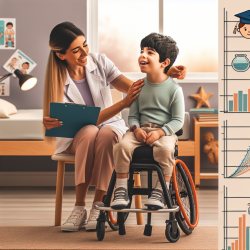Understanding Speech Development in Children with Cerebral Palsy
Speech development in children with cerebral palsy (CP) is a critical area of focus for therapists and educators. A recent longitudinal study published in the Developmental Medicine and Child Neurology journal provides valuable insights into how speech severity changes over time in children with CP. This study, titled Longitudinal change in speech classification between 4 and 10 years in children with cerebral palsy, offers key findings that can significantly impact therapeutic approaches.
Key Findings from the Study
The study followed 101 children with CP, aged 4 to 10, using the Viking Speech Scale (VSS) to classify speech severity. Here are the primary findings:
- Speech severity generally decreased between ages 4 and 10, indicating improvement.
- Children initially classified in VSS levels I, II, or III at age 4 had a high probability of reaching or maintaining VSS level I by age 10.
- Children classified in VSS level IV at age 4 were likely to remain at this level by age 10.
Implications for Practitioners
For practitioners, these findings underscore the importance of early intervention and continuous speech therapy. Here’s how you can apply these insights:
- Early Assessment and Intervention: Early speech performance is a strong predictor of future abilities. Begin speech therapy as soon as possible for children with any level of speech impairment.
- Tailored Therapy Plans: Customize therapy plans based on initial VSS ratings. Children with higher initial ratings may require more intensive interventions.
- Augmentative and Alternative Communication (AAC): Introduce AAC methods early for children with severe speech impairments to enhance communication abilities.
Encouraging Further Research
While this study provides a solid foundation, there is always room for further research. Practitioners are encouraged to explore:
- The long-term effects of different speech therapy techniques on children with CP.
- The impact of integrating AAC devices with traditional speech therapy.
- How environmental factors and family involvement influence speech development.
By staying informed and adapting to new research findings, practitioners can significantly improve the quality of life for children with CP. To read the original research paper, please follow this link: Longitudinal change in speech classification between 4 and 10 years in children with cerebral palsy.










